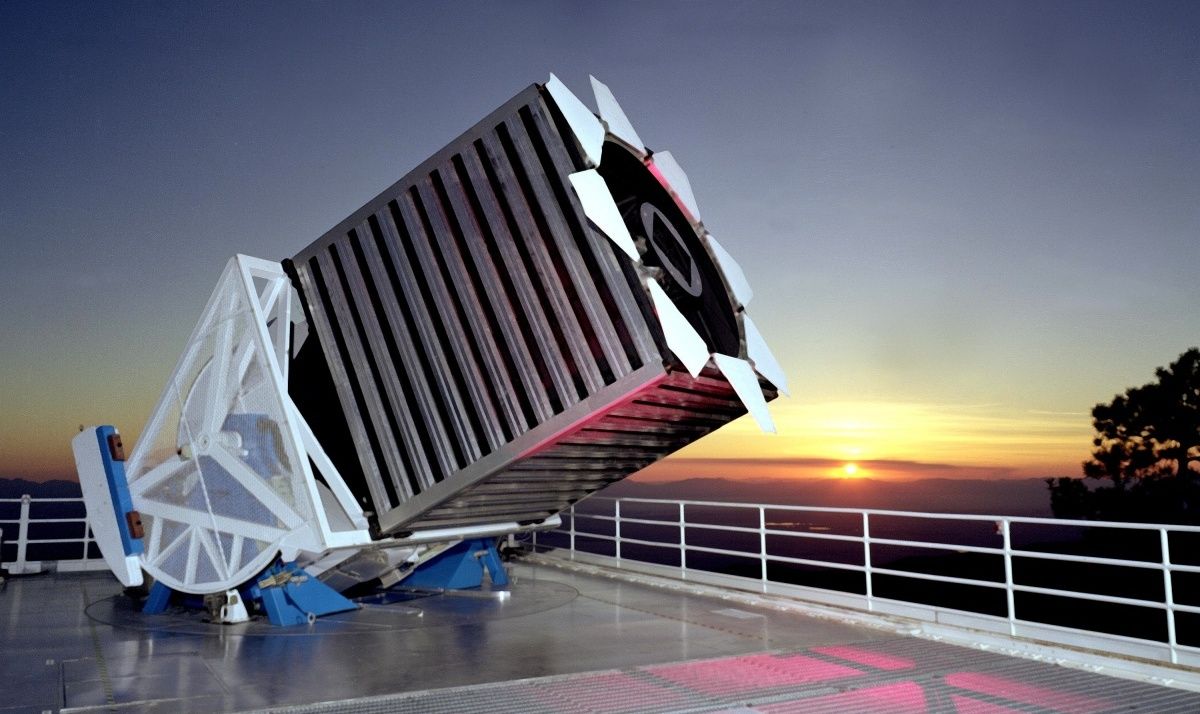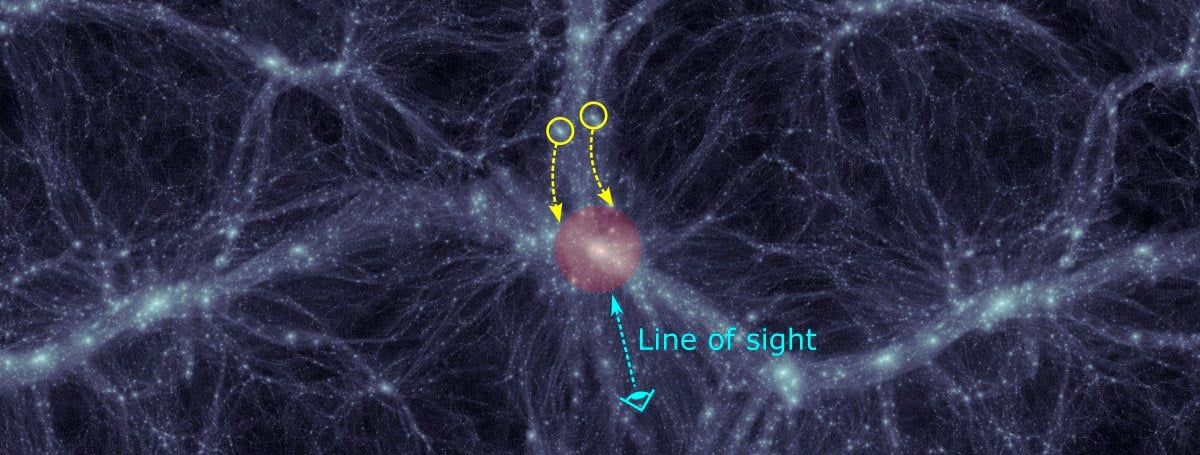The Universe Might Be Younger Than Previously Thought
Follow us on Google News (click on ☆)
In conventional cosmological models, the formation of the Universe's structures begins with small entities that gradually merge, forming larger systems. As they age, massive clusters of galaxies tend to increase in mass and reach increasingly stable states.

The SDSS Telescope.
Image sloan.org
Studying the movements of satellite galaxies around these clusters provides valuable clues about their assembly state and, by extension, the age of the Universe. The research team analyzed the kinematics of satellite pairs around massive galactic groups, revealing evidence suggesting that the Universe might be younger than the predictions of the standard LCDM cosmological model based on Planck cosmological parameters.
The researchers examined the movement of satellite pairs located on opposite sides of massive galactic groups, using their velocity shifts in relation to the central galaxy. They found a notable excess of pairs with correlated velocity shifts as compared to those with anti-correlated shifts. This excess suggests the presence of satellite galaxies that are either newly accreted or currently being accreted.
Although this excess has also been observed in recent cosmological simulations, its magnitude is significantly less than what has been observed. This significant divergence between observations and simulations indicates that massive galaxy clusters could be younger than assumed.

Galaxies falling into a massive galaxy group. As they enter the group, these galaxies show a blue shift relative to the central galaxy.
Credit: Dr. Shihong Liao
This discovery offers a new perspective on the age of the Universe, which is younger compared to estimates derived from the Cosmic Microwave Background (CMB) by the Planck Collaboration. It could also shed light on the Hubble tension problem, a persistent challenge in modern cosmology.
The Kinematics of Satellite Galaxies
The kinematics of satellite galaxies is a key concept in studying the age and structure of the Universe. This term refers to the analysis of the movements of satellite galaxies around massive galaxy clusters. These satellites are smaller galaxies that orbit around larger and more massive galaxies. Their study is vital for understanding how galaxy clusters form and evolve over time.
In the context of this research, the focus is placed on the speed and direction of these satellite galaxies' movements. Researchers examine pairs of satellites positioned on either side of a massive galactic group, observing their velocity shifts relative to the central galaxy. By doing so, they can infer information about the dynamical state and age of the galaxy group, and by extension, the age of the Universe itself.
When these satellite pairs show correlated velocity shifts, it suggests a recent accretion or attraction of satellite galaxies toward the group. This could indicate that the galaxy cluster is relatively young and has not yet reached a dynamically stable or "relaxed" state. Comparing these observations with cosmological simulations allows scientists to test the validity of current models of the Universe and to make adjustments as necessary.